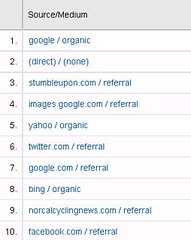SEO Web Design Secrets: Search Engine Optimization Tips For Beginners
SEO web design is a skill that can be learned, though most search engine optimization for beginners courses dwell too much on linking strategy as opposed to web site design per se. There are many ways for most normal people to get an improved search engine ranking, and secure a high search engine listing, and while linking is important, good on-site SEO is also necessary.
Although it might not seem like it, getting a good listing on Google or any of the other search engines is not as difficult as many like to claim. There are rules to follow, and if you play the game properly then the outcome should be in your favour. The tips provided in this article are not really secrets as such; although many people offer to divulge marvelous secrets to you, all they are giving you is stuff that people have been using for years.
So you won’t get any secrets here. I have nothing hidden away that I don’t want anybody to know, and if I had I wouldn’t tell you about it! Would you? If you had some secrets that were so valuable that they were making you money, would you give them away free in an article like this one? Of course you wouldn’t!
So here are my not-so-secret tips on getting a good listing in Google and improving your search engine ranking. You likely know a fair bit about meta tags, and have been informed that most are not used by search engines. Well let me tell you something. If you ‘Google’ Article Services you will finds my website right at the top in the #1 position for that keyword. Check the description that Google provides right under the title: that is exactly as it is in the ‘Description’ tag that I have on the site. So don’t let anybody tell you that Google don’t use the Description tag, because they do. So do Ask and MSN (now Live Search), and Yahoo also uses it, but not the whole thing exactly as written.
The Keyword tag is another matter. Google aren’t interested in what you tell them the keywords are: they decide the relevance of the page themselves from the text and Alt tags on the page. Google no longer need keyword repetition to understand what you are writing about: they have the LSI algorithm now, that will determine the meaning of your page from the character strings it contains. The algorithm is programmed to calculate a relevance factor from the vocabulary you use in relation to the rest of the vocabulary on the page. However, back to SEO web design, and some search engine optimization tips for beginners.
In addition to the Description meta tag, the HTML tags you should use are:
1. The Keywords meta tag. Although little used it only takes a second to put in, and does no harm. There is evidence that some search engines might use it. The rest of the meta tags are pointless.
2. The TITLE tag. This is the title of your web page, and should contain the primary keyword for the page. Each page should be written round one primary keyword that relates to the subject of your website or niche.
For example, if your niche is costume jewelry, the primary keyword for your home page would be ‘costume jewelry’. You could then have a number of ‘silos’ with a main page title each. The title of one main silo page could be ‘simulated diamonds’ and the first page title of that silo could be ‘garnets’. All of these are the primary keywords for their respective pages. Another silo could be ‘colored gem stones’, with that as the primary keyword for the main silo page, and that for your first sub-page in that silo could be ‘citrine’. And so on.
Each page must have one primary keyword, and it should be included in the Title tag for that page. The Title tag does not appear in the body of the article, but in the HTML between the two HEAD tags in your html.
3. The H tag. These are heading tags, with H1 being the most important. The heading for each main section in your page should be contained within H1 tags, and many pages have only the one set of such tags. Subheadings, containing secondary keywords, should be contained within H2 tags, and so on. Thus, in the example above, the heading or your garnets silo could be could be ‘Garnets in Costume Jewelry’ in H1 tags.
After an introduction to garnets, you could then have an H2 heading containing ‘The Source of Garnets: Where Garnets Come From’, then another passage of text headed ‘How Garnets are Cut for Costume Jewelry’, again held in H2 tags.
4. The ALT attribute. Use ‘Alt = ‘ within the Img tags of your images and graphics. This lets the search engines know what the graphic is about: search engines do not read graphics, and the Alt attribute offers you the chance to use your graphics meaningfully with respect to SEO web design.
TEXT FORMATTING
That’s all you have to worry about regarding the HTML tags. You text formatting can be used to emphasize to search engines what the important text on your page is. Thus, if you use bold text, underscoring or italics, they indicate the important words and phrases. Thus, use the STRONG and U html tags in your heading.
WRITE NATURALLY
Don’t worry too much about your keyword density (KD), other than having to much. Too high a KD could harm you if Google thinks you are making unnecessary use of them. Write naturally for human readers, and not robots. If your text reads well and makes it clear what the subject of the passage is about, then you will be fine. In my writing I ignore the concept of KD altogether. I use my keywords as indicated above, and also in the first and last 100 characters on the page (or at least in the last paragraph somewhere).
Good SEO web design is not keyword fixated, but contains good contextually related vocabulary that the LSI algorithm can use to target the relevance of the page to the search term being used by somebody using the search engine to find information. That’s all a keyword is: a term used by somebody looking for information. If you cannot work without a target KD, then I would go for a max of 1% with plenty associated vocabulary, synonyms. Related terms, etc.
Thus, if you are writing a 400 word article on the keyword ‘losing weight’, use these words four times, not twelve (1% not 3%)
None of these are web design secrets, and I doubt if there are any such secrets left any more. I suppose the only thing even approaching a secret here is that my description meta tag is copied exactly by Google in the listing for my #1 placed website. That allows you to determine how Google users see the description of your site in the listing.
I have several more SEO web design tips to offer, but these will be the subject of another article. In the meantime if you implement these search engine optimization tips for beginners, then you should soon see an improvement in your website’s search engine ranking.
If you want more SEO web design tips, you will find Part 2 of this article with more search engine optimization tips for beginners on Seocious Tips 2 along with a free gift for everybody from me, Pete Nisbet of SEOcious.
Article from articlesbase.com

Is it really possible to get targeted traffic for free? Not only is it possible, it’s impossible to make money with out it! Finally everything there is to know about Search Engines and everything there is to know about making money from them, laid out with ease! Here is what you will learn inside this guide:
? Why every other traffic source is simply unacceptable to make money
? A simple way to get any site indexed in the search engines quickly and easily
? How the key to
List Price: $ 4.31
Price:
More Search Engine Secrets Articles






